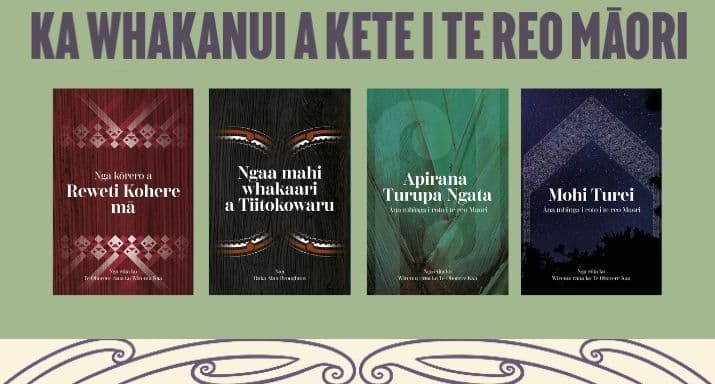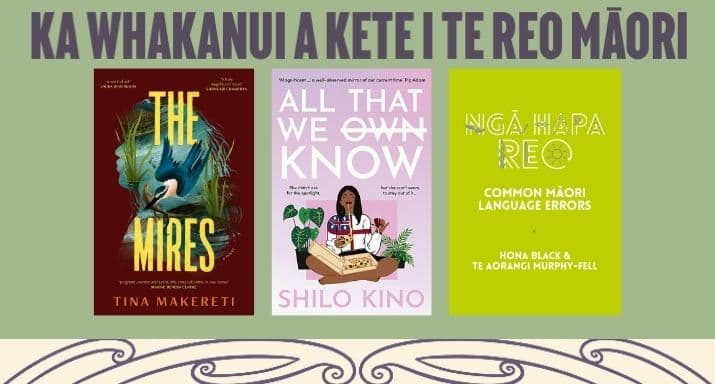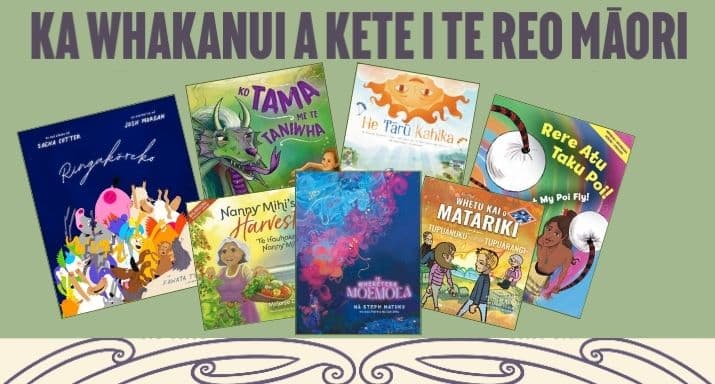Welcome to Māori Language Week!
Read the original Māori language version of this article here
Māori Language Week first took place in 1975. I reflect on those times when people fought for the recognition of our language, for it to be acknowledged in its own homeland. Now, when I look at the various Māori language initiatives today, I am amazed! The fruits of their struggle are now being reaped.
Mahuru Māori began in 2017, and now coincides with Māori Language Week. Everywhere, in every sector, the language is being celebrated. Yes, some say that we should celebrate the language every week and month of the year, but if that were the case, we’d be exhausted. There are those for whom the language is their world every day, but the beauty of these celebrations is that they allow us all to come together and celebrate as a nation.

Last year, Ruth Smith was the “guest editor” invited by Kete. This year, the invitation came to me. I express my gratitude to Kete for upholding this tradition of appointing a writer or translator to be the editor of Māori language content each year. This is a wonderful example of how everyone comes together during this celebration to support the cause.
As I reflect and admire the work that has been done, I want to focus on Māori literature. This year, Te Herenga Waka has republished a new edition of Ngā Kōrero a Reweti Kohere mā. Alongside that are works by Apirana Ngata, Mohi Turei, and Ruka Broughton. It seems that these elders were prolific in their writing. Earlier generations, like Mohi Turei, were taught by missionaries. Following them were generations educated at schools like Te Aute.
In these four books lie our stories in our language—our histories, farewells, their thoughts on the issues of their time, and even the humorous stories of Māori. They laid the foundation of the Māori literary house. Then came the generation of Witi Ihimaera, Tā Tīmoti Kāretu, Patricia Grace, Kāterina Mataira, Merimeri Penfold, Te Ohorere, Wiremu Kaa, and others, who completed the construction of the house.

Those who come after, following the traditions left behind, are decorating the walls of the house and keeping it warm by occupying it. Recently, Tina Makereti published her new book The Mires, which was reviewed by Natasha Lampard and translated into Māori by me. Thinking of my generation, I can’t help but mention Shilo Kino. Her second book, All That We Know, has just been released. Let me say this—read it! It was reviewed by Damien Levi, and I translated his review into Māori.
In the coming days, a new book by Hona Black and Te Aorangi Murphy-Fell, Ngā Hapa Reo, will be released. This is Hona’s third book to help those learning the language. Kotahi Rau Pukapuka is also doing great work! Soon, He Kupu nā te Māia, a collection of poems by Maya Angelou, translated by various women, will be published.

Finally, I turn to the next generation, who will be responsible for caring for the Māori literary house in the years to come. Kete invited students from Te Kura o Te Uru Karaka (aged 8-11) to read children’s books, and they wrote their reviews in Māori, which I then translated into English.
Let me conclude here, as the future belongs to the younger generation. I am confident they will continue to uphold the Māori literary house we stand in today.